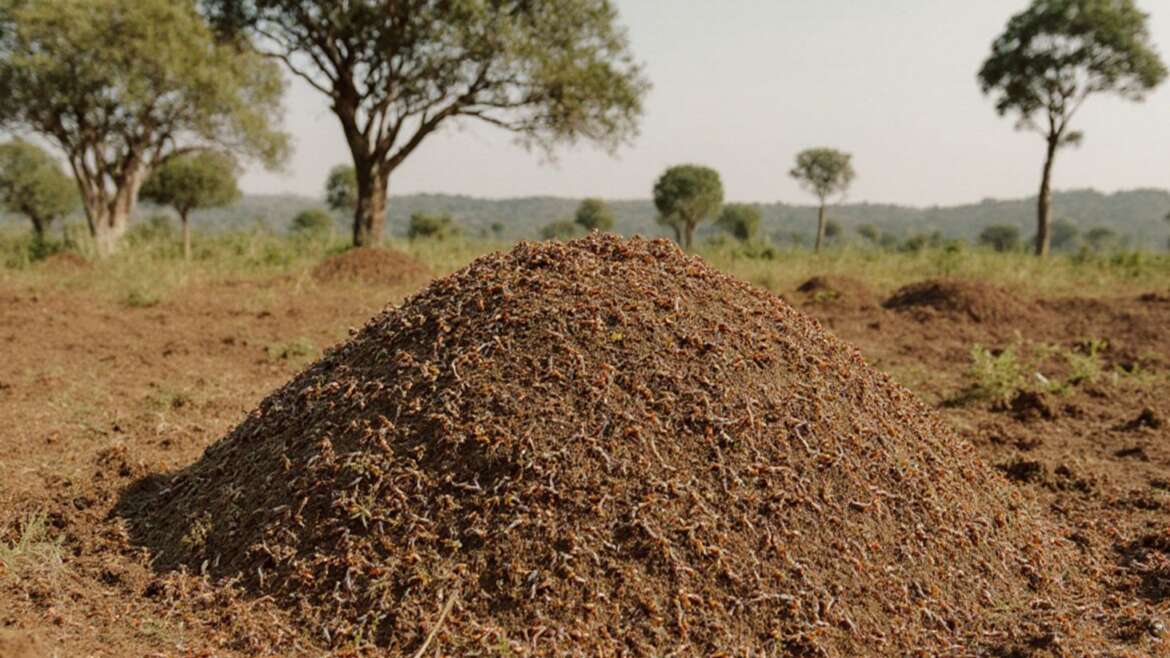Termites, often misunderstood, are a species found globally, with a dual nature that can either aid or hinder ecosystems, depending on their species and geographical context. In the United States, they have developed a notorious reputation, primarily due to their potential to compromise the structural integrity of homes, fences, and other constructions. However, in their natural habitats, termites play an invaluable role in decomposing dead or decaying wood, contributing to nutrient cycling in their ecosystems.
Termite damage is not limited to residential concerns; it adversely impacts various industries, particularly agriculture. Many termite species construct substantial mounds to house their colonies, which can yield both benefits and drawbacks for local farmers. Understanding these dynamics is crucial for sustainable agricultural practices.
Agricultural Advantages of Termite Mounds
For example, the rice farmers of Laos have harnessed the benefits of termite mounds by using them as natural fertilizers and charcoal kilns. Remarkably, termites themselves serve as a food source for fish, while the reproductive alates are consumed by local villagers. Research conducted in Laotian villages along the Mekong River reveals that rice yields in areas bordered by termite mounds surpass those in regions devoid of these structures.
Villagers crush and distribute the soil from the mounds across their rice paddies before planting; this nutrient-rich earth acts effectively as a natural fertilizer. Furthermore, adult termites collected from these mounds are used to nourish various types of fish raised for food. In addition to these practices, the mounds are also utilized as gardening beds, thanks to the high nitrogen content of the soil.
Recently, villagers have begun selling the delicacies that thrive on some of these mounds, such as mushrooms. This budding cash crop may motivate farmers to protect and conserve termite mounds, recognizing their ecological and economic value.
However, studies indicate that in certain locations, villagers are eroding termite mounds faster than the termites can replenish them. To safeguard termites as a sustainable resource, Laotian communities might need to adopt ongoing termite conservation strategies.
Tip: Consider conducting soil tests when using mound soil to assess its nutrient levels, ensuring optimal fertilization and crop health.
Links Between Ants, Termites, and Soil Health
In Australia, researchers have uncovered that both termites and ants contribute significantly to enhancing wheat crop yields in arid conditions. By investigating soil mineral content and water absorption, the study compared fields occupied by these insects with those that were treated to exclude them.
The findings highlighted that wheat yields were 36 percent higher in fields with termites and ants. Interestingly, the tunnels created by these insects facilitate deeper infiltration of rainwater, enabling moisture retention at a rate three times greater than in treated fields.
Additionally, the presence of ants and termites positively influences the nitrogen content of the soil. The gut bacteria of termites boast high nitrogen levels, and the unique method of tunneling permits this nitrogen to be transferred effectively into the soil, thus enriching it.
Fact: The relationship between insects and crop yields emphasizes the importance of biodiversity in agriculture—practicing ecological farming techniques can dramatically improve yields without reliance on synthetic fertilizers.
Termite Species in the Americas
While certain regions have adapted to coexisting with termites, they can pose significant challenges in other areas. For instance, in the Amazon rainforest, termites proliferate across land that has been cleared for farming, particularly when left fallow. Depending on the specific termite species, soil quality may decline, potentially averaging lower crop yields due to imbalanced nutrient additions. Disruptions to ecosystems, such as rainforest clearing, have far-ranging impacts on biodiversity and agricultural viability.
In the United States, the consequences of termites on agriculture typically manifest as property damage. The species prevalent in the U.S. are notorious for their voracious appetites, resulting in the deterioration of wooden structures, including fencing, sheds, barns, and more. Unlike their mound-building counterparts globally, North American termite species primarily nest underground, making them less accessible as fertilizer or livestock feed.
Regardless of whether termites are viewed as beneficial or detrimental to agriculture, it’s crucial to recognize that they are not welcome in residential spaces. If you notice signs of termite activity in your home, promptly initiate a FREE Termite Inspection online to avert potential damage.
Tip: Familiarize yourself with the signs of termite activity—such as mud tubes and discarded wings—to swiftly identify infestations and mitigate damage.

